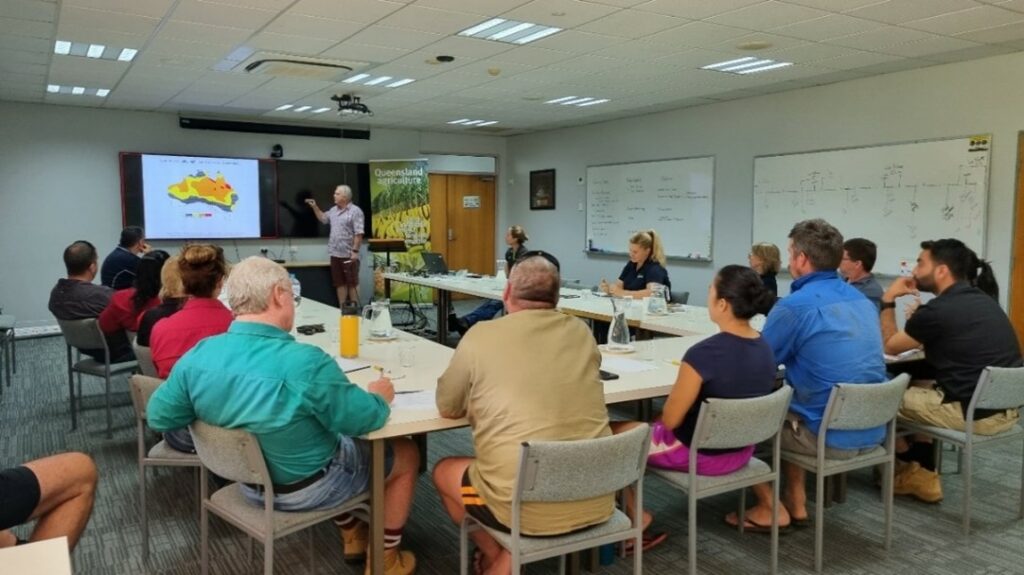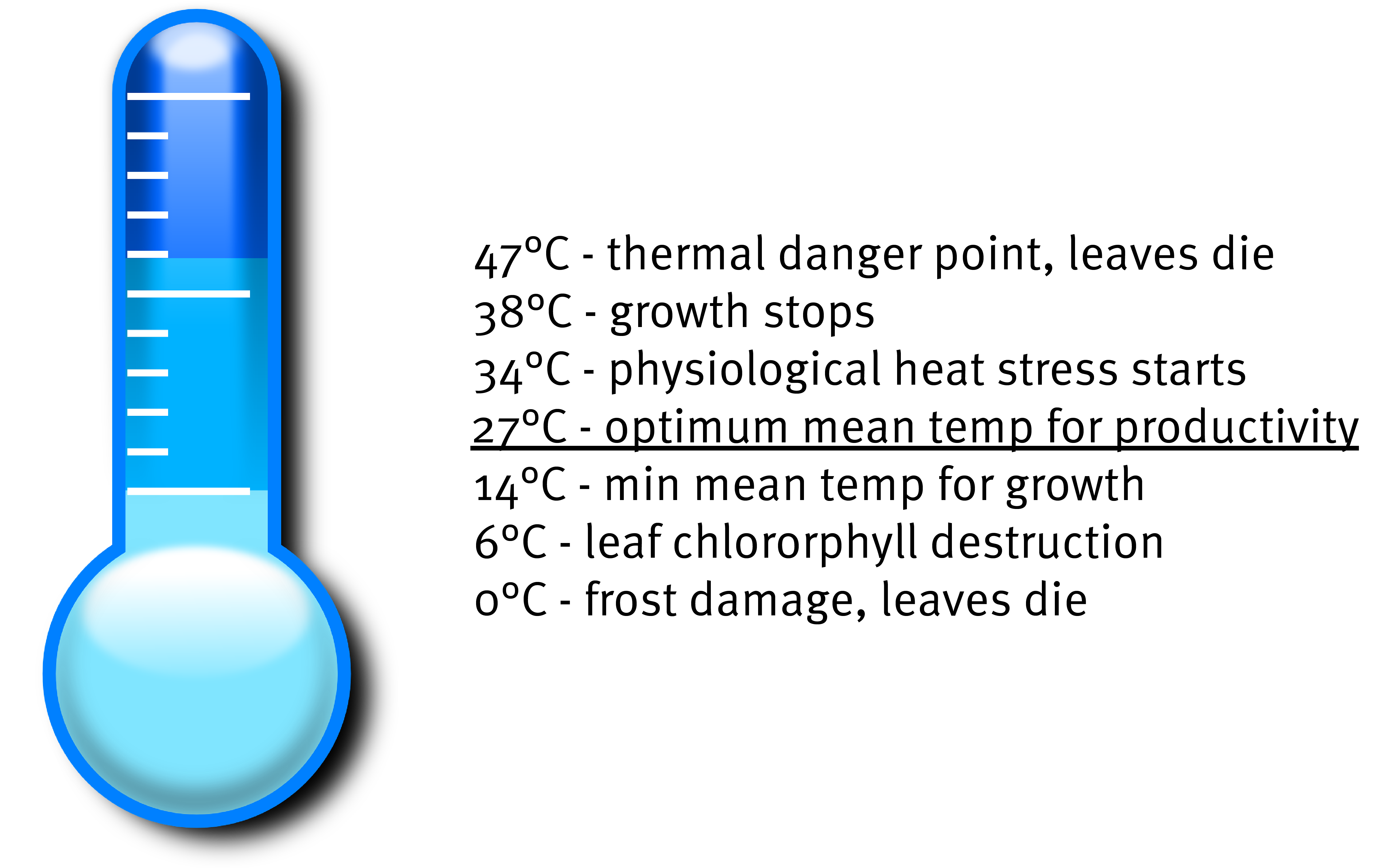Finger on the pulse with the latest climate and seasonal forecasting information
By Shanara Veivers
Weather data and information is an absolute necessity for any farmer to consider in making critical on-farm decisions. Those decisions can include when to plant, spray, irrigate and fertilise your crop. Even successful transportation of your crop can be dependent upon the cooperation of the weather. Having the advantage of knowing climate and seasonal conditions for your location in advance can be a significant benefit in protecting your crop and property.

Organised as part of the National Banana Development and Extension Project, a climate and weather workshop was held for the NextGen banana growers’ group and interested industry stakeholders at the Department of Agriculture and Fisheries (DAF) South Johnstone Research Station.
If you missed it, the workshop kicked off with participants reflecting on notable weather events and natural disasters experienced in the Cassowary Coast region from the early 1990’s to present.
A series of interactive presentations, incorporating videos about important climate drivers and the new Bureau of Meteorology (BOM) forecasting tools and outlooks were presented by Dr Neil Cliffe (Manager for the DAF Drought and Climate Adaptation Program). Dr Cliffe spoke about important climate drivers that influence Australia’s highly variable climate.
Check out the Bureau of Meteorology video links below which explain how these drivers influence Australia’s climate:
1. El Nino-Southern Oscillation (ENSO) – One of Australia’s strongest climate drivers.
2. Madden Julian Oscillation (MJO) – An important driver of tropical weather around the globe.
3. Indian Ocean Dipole (IOD) – Most significant climate driver in the Indian Ocean. It refers to the year-to-year changes in tropical sea temperatures in the Western and Indian Oceans.
Tools
The BOM have developed new forecasting tools to assist farmers and agribusiness plan for extreme weather events and build stronger climate resilience into farming systems. These tools provide forecasts for 2 weeks to 3-month timeframes, filling a forecast gap not previously covered in the existing shorter and longer-term forecast products. Five new features on the BOM website include:
1.
Maps showing the likelihood of having extreme rainfall, maximum and minimum temperature for the weeks, months, and seasons ahead.


2.
Location specific data indicating shifts in rainfall and temperature probabilities compared to usual across the deciles/quintiles.
3.
Climate summary – Forecast timeline showing what has happened over the last few months, and what may happen in the next few months for rainfall and temperature.


4.
Probability of exceedance (rainfall only) shows the forecast chance of any rainfall total for any location.
5.
Three-day-burst forecast shows the chance over a 3-day period of getting a burst (15, 25, 50 or 75mm) of rainfall in total over those 3-days.

Summary of extreme temperature, water and wind impacts on bananas
High temps
34oC or higher – leaf scorching, root growth stops & under peel discolouration occurs.
Other high temperature impacts – sunburn to stalk, fruit, and cigar leaf (most susceptible), impacts on bunch formation and differentiation.
Low temps
14oC or less – field chilling causing under-peel chilling & root growth stops.
Other low temperature impacts – water-soaked necks on fingers, frost damage, ‘winter yellows’ on leaves, and ‘November dumps’ on bunches.

Waterlogging
More than 24 hours kills root tips; more than 4 hours reduced nutrient loading to 36%.
Other impacts – encourages production of aerenchyma tissue production in roots which improves gas exchange and potentially easier for Fusarium wilt fungi to infect roots.
Water deficit
Controlled deficits experiments have shown reduced productivity by 30-50%.
Other impacts – plant stress; increased pest mites e.g., banana spider mite.
Wind
Highly susceptible to wind damage and don’t need cyclonic winds to produce damage.
Greater than 50km/h can blow down large, bunched plants.
Greater than 70km/h can cause 50-100% blow down.
Participant feedback
Growers and stakeholders who attended the workshop spoke highly of the event and took away knowledge that they felt will help them with making farm management decisions.
“It was one the workshops that I’ve attended and enjoyed most. There was really good information, and I would attend an event like this again”.
“It is hard to get away from the farm sometimes, we are all busy, but we need to make effort to go to these things”.
“Some of the new tools can be used as a pre-emptive strategy, mapping out weather predictions and forecasts and its potential impact on fruit quality”.
“Great workshop and I really enjoyed the activity where we went through the historical data and made a timeline of weather events. Looking back at the historical data set the scene and was good information”.
We will continue to seek input from the NextGen group and other growers to drive the agenda for workshops, meetings and/or activities, to ensure they are relevant and useful. Topics and ideas suggested by participants at this workshop included: business management, leadership, banana agronomy and chemical impacts on bananas. These will be considered for future NextGen and wider industry activities.
The weather workshop was delivered as part of the National Banana Development and Extension Program (BA19004) which is funded by Hort Innovation, using the banana research and development levy, co-investment from the Department of Agriculture and Fisheries and contributions from the Australian Government. Hort Innovation is the grower-owned, not-for-profit research and development corporation for Australian horticulture.


